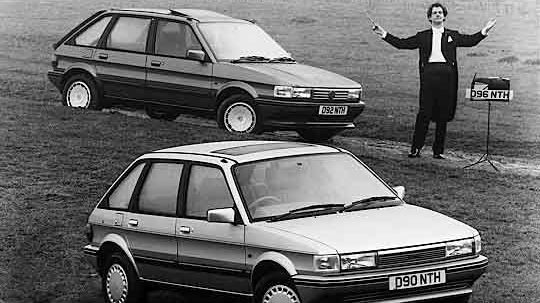By Simon Hacker
Up on the lofty high ground of Now, it’s easy to laugh at Then.
So let’s start with the launch of a “personal computer” from IBM, called the PC XT. Three years earlier, the original PC begat this design, but we’re still looking at a spec – despite the Portakabin-size bodywork – which your average modern mobile would sniff at. RAM? 128kB, maxing to 640kB with expansion slots. Hard drive? 10MB.
Older members of the automotive writing fraternity, including me, will remember the churning machinations of such nascent technology.
Yet without it, we’d not be zapping our website to today’s tablets and pocket-sized widgits. So put that in your portal, Apple addicts, before you snigger.
Similar caution should perhaps be exercised towards project LM10, aka the Austin Maestro. This towering example of automotive brilliance hit the streets on March 1. Brilliance? Let’s not forget this replacement to the perhaps not-so-brilliant Allegro (square steering wheel, anyone?) and congenitally deformed Maxi was the world’s first talking car.
Talking, you cry, what did it say? “Hello, you look like a soft touch, want to buy me?” No, that would be silly. The voice that emerged from behind the state-of-the-art digital instruments said sensible things like “Warning, low fuel” and “Didn’t you mean to buy a Ford?” (okay, maybe not) and the car also had such innovations as an asymmetrically folding rear seat and height-adjustable seat belt mountings (thus giving dealers something to distract from the hilariously Stalinist body styling).
In truth, the Maestro was a four-wheeled corporate blunder. BL’s troubles meant it was essentially a three-year-old design before it was launched. Some wanted to perform a handbrake turn just four months from production, but BL knew that would mean asking the government for yet more cash. Roy Axe, parachuted into the role of chief stylist at the last minute, famously said: “I couldn’t believe my eyes. The whole car’s stance and proportion was wrong. To find a car that was two decades out in its thinking was just mind-boggling.”
As a final twist though, let’s not forget that initially at least the Maestro was a sales success – in some ways, it tempted a British public running scared of the jelly-mould alternative of Ford’s “aero” styling. Officially, the Maestro died in 1994, but like some scary auto zombie, it staggered on until 1996 through a Bulgarian operation… and then had the last dregs of its bodykits bought up by Trans European Trading, who knocked out a no-frills hatch and van option from an old service station in that well-known Mecca of car building, Ledbury.
The severely posthumous Ledbury Maestro was sold for £4,995 and the last plated one was sold in 2001. And in China – you guessed – Maestro tooling was employed to create the Etsong QE6400 which knocked around until 2005.

If all this automotive history makes you queasy, you might want to relax with a bit of dancing. Appropriately, this was the month that the compact disc made it onto the UK market as an entertainment option. It enjoyed fantastic PR, given that we were all convinced that it could be smeared with jam and garden strimmed yet still play perfectly. The jittery reality proved slightly different. The dance routine of the month, however, had to be Michael Jackson’s Moonwalk: he performed if for the first time to the single Billie Jean. It was hard to tell if anyone Moonwalking was going forwards or backwards. I’m sure British Leyland bosses must have known the feeling.

